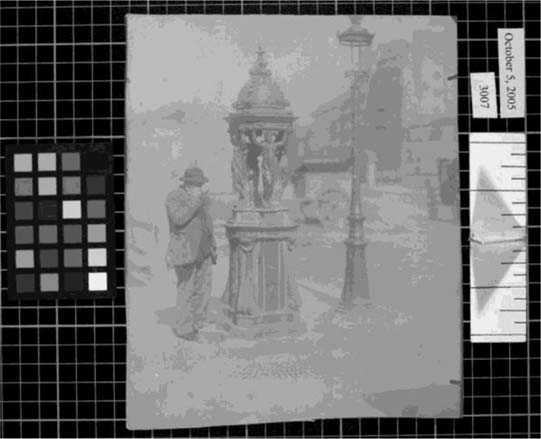
Topics in Photographic Preservation 2007, Volume 12, Article 28 (pp. 194-210)
Paper presented February 8, 2006 to The Museum of Modern Art, Photography and Conservation Departments
Working as a commercial photographer in Paris for over thirty years, Eugène Atget (b. 12 February 1857, d. 4 August 1927) inhabits a unique space in the history of photography, single-handedly bridging the gap between the commercial documentary photography of the nineteenth century and the new artistic vision of modern photography in the twentieth century. Amassing as many as 10,000 photographs of Paris and its surrounding areas, Atget created a prolific body of work that is now recognized for its fluidity, objectivity, and artistic merit. Taken in its entirety, Atget's work paints a portrait of the historic fabric of French culture and of Paris at the beginning of the 20th century.
When he died in 1927, Atget's work was known by a relatively few archivists and artists who shared his interest in the historic nature of French culture. Little was known about his life and his work, and even less about his photographic technique. After his death, Atget's friend, André Calmettes divided his work into two categories, photographs of historic Paris and photographs on all other subjects. He donated the photographs of historic Paris to the French government and sold the other half to the American photographer Berenice Abbott (b. 17 July 1898, d. 9 December 1991) (Worswick 2002) Abbott met Atget while working as Man Ray's (b. 25 August 1890, d.18 November 1976) studio assistant and was greatly influenced by his work. Abbott spent much of her time reprinting Atget's negatives, attempting to exhibit his work and working to increase understanding of Atget as an artist, often putting his work before her own. During the Depression in the 1930's Abbott sold half of her collection to Julian Levy, who owned a gallery in New York (Worswick 2002). Levy was unable to sell many of the prints, and allowed Abbott to keep possession of them. In the late 1960's Abbott and Levy sold the collection of Atget's to The Museum of Modern Art. As MoMA bought it, the collection contained 1415 glass negatives and nearly 8,000 vintage prints from over 4,000 distinct negatives (Worswick 2002). The extensive and centralized nature of the Abbott Levy collection makes it an ideal point of departure for understanding Atget, his photographic vision, and technique.
Little is known about Atget's technique, except for what is readily visible from examining his surviving photographs and from a few accounts from his friends and acquaintances. Advances in scientific analytical techniques as well as growing interest in Atget's work has recently prompted technical studies of Atget's photographs in Parisian collections (Cartier Bresson 1987) and in the Philadelphia Museum of Art (Price and Sutherland 2005), but many of the details of Atget's technique have still come from interviews with his contemporaries. In the 1920's Man Ray occasionally purchased prints from Atget and recalled, “Atget lived a few doors down from my studio in Paris in the twenties. He had albums which he printed on a little frame, putting it outside his window to dry in the back yard in the sun, and as soon as he had the prints, he put them in a book. You could go to him and buy a print for five francs, and then he'd replace it. They were all in the French size (18 × 24 cm). I begged him once, “Lend me some of your plates and I'll make some prints on modern paper.’ ‘Oh, no,’ he said, ‘that's not permanent.’ His prints all faded if you exposed them to light, because they were washed in salt water to fix them. They were the kind of prints that photographers made as proofs for their sitters so that they wouldn't be kept as permanent things.” (Cooper and Hill 1979) Looking at some of Atget's most deteriorated prints (figure 1- All images in this study are part of The Museum of Modern Art Abbott-Levy Collection. Partial Gift of Shirley C. Burden), one might believe Man Ray's account of Atget's impermanent and naïve technique, but after viewing a few of his well preserved masterpieces (figure 2), it becomes clear that Atget was quite capable in the darkroom, able to make prints that were both beautiful and permanent.

Figure 1: Albumen silver print in poor condition
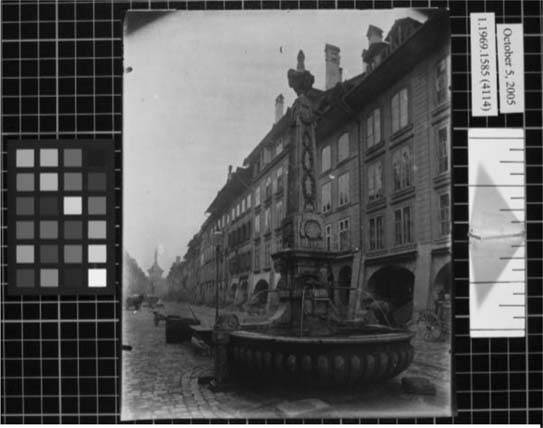
Figure 2: Albumen silver print in good condition
Presumably, the prints in the Abbot Levy collection have experienced the same general history. They were kept in Atget's studio, likely in paper albums, until his death, when they were purchased and brought to the United States by Berenice Abbott. The pictures remained with Abbott until they were sold to The Museum of Modern Art, with the exception of the exhibition and sale of a few prints (Worswick 2002). There is little to account for the wide differences in condition among the prints except for yet unidentified factors inherent to the creation of each photograph, either inherent to Atget's use of materials or his technique. To better understand the technical art of Atget's work and the condition of his prints, an XRF and FTIR study of Atget's photographs was undertaken in the Paper and Photograph Conservation Laboratory at The Museum of Modern Art. The project was conceived and designed by Lee Ann Daffner, Andrew W. Mellon Foundation Conservator of Photographs. MoMA's Conservation Scientist, Christopher McGlinchey, supervised and directed the technical analysis, and Erin Murphy, then Andrew W. Mellon Fellow in Photograph Conservation, carried out the day-to-day supervision and arrangements.
Born in 1857 near Bordeaux, France, Eugène Atget did not take up photography until he was around 30 years old. At age five or six Atget was orphaned and was sent to live with his grandparents. After he finished school, he went to work at sea, although his real ambition was to become an actor. In 1879, Atget managed to gain acceptance to the Conservatoire d'Art Dramatique in Paris, which would have guaranteed him a career in the national theater, but just before the session was to begin, he was drafted into the army. His work at the Conservatory suffered due to his military obligations, and he was dismissed after only a year. Atget acted for several seasons in the provinces in minor roles, but unable to distinguish himself, he finally left the stage. (Szarkowski and Hambourg 1981)
It is not known how or when Atget learned photography, but by 1891 he hung a sign outside his door in Paris announcing, “Documents pour Artistes”, and began selling photographs of flowers, animals, landscapes, and monuments that artists could use as studies for their work. After leaving the theater, Atget had attempted a painting career, but without formal training or connections, did not find any success. Despite this failure, Atget's interest in the arts gave him a particular sensitivity to artists' needs. In these early pictures, Atget isolated his subject in the center of the picture plane, presenting a clear and detailed view, often reminiscent of a botanical illustration, providing the exact details needed for an artist's study. (Szarkowski and Hambourg 1981)
As time went by, Atget expanded the range of subjects he photographed, beginning a series of picturesque views of Paris, including his series of Petits Métiers, which documented the vanishing street trades at the end of the nineteenth century, as well as views of gardens in the areas surrounding Paris. In the summer of 1901, Atget made his first trip to photograph the gardens at Versailles. Atget was not only interested in Versailles for its historic significance, but also because the vast gardens' planned perspectives and large scale presented him with new photographic challenges. At Versailles Atget learned to create compositions out of tonal masses, to juxtapose natural and man made elements, such as architecture and statuary with plants and trees, and to visually join near and far elements (Szarkowski and Hambourg 1981). Atget continued to frequent the gardens of Versailles from 1901 until his death in 1927.
In the early1900's, equipped with a growing knowledge of photographic composition and technique, Atget began his greatest project, to document “Old Paris,” including Parisian art and architecture dating prior to the French Revolution. These photographs found particular commercial success, as urban renewal and modernization programs that often resulted in the destruction of historic neighborhoods caused a rising concern for the preservation of Old Paris art and architecture. Atget read extensively on historic Paris and was able to respond sympathetically to his newly chosen subject. Rather than creating standard documentary architectural elevations, Atget often chose to photograph architecture from the pedestrian's point of view, creating an intimacy that expresses the historic character of the winding streets of Paris. Atget's new focus on Old Paris also expanded his clientele; he was now able to sell his work to craftsmen and collectors of Old Paris documents, including institutions like archives, schools, and museums, in addition to artists. This marked the beginning of the period of Atget's greatest commercial success, which resulted in commissions from the Bibliotèque Historique de la Ville de Paris in 1906 and 1911 and the sale of various albums of photographs to the Bibliotèque Nationale (Nesbit 1992). By the end of his career, Atget developed thirteen separate series of photographs including Landscape Documents, Picturesque Paris, Art in Old Paris, Environs, Topography of Old Paris, Tuileries, Vielle France, Interiors, Saint Cloud, Versailles, Parisian Parks, Sceaux, and a small series on costumes and religious arts. Atget worked on these different series concurrently, and returned to subjects after they had been put aside for many years.
The outbreak of World War I resulted in the scarcity of photographic supplies and a depressed economy that forced Atget to photograph at a greatly reduced rate. Once photographic supplies returned to the market, Atget resumed his work, but in the postwar atmosphere, there was little market for his documents. Reconstruction was the most pressing concern and interest shifted away from the preservation of Old Paris. Artists started working in modern styles without reference to the past and the damaged economy slowed sales. In the fall of 1920, Atget sold a large portion of his negatives of art and architecture of Old Paris to the French government. In a letter, Atget explains, “For more than 20 years I have been working alone and of my own initiative in all the old streets of Old Paris to make a collection of 18 × 24cm photographic negatives: artistic documents of beautiful urban architecture from the 16th to the 19th centuries…today this enormous artistic and documentary collection is finished; I can say that I possess all of Old Paris.” (Atget 1920)
With the money from this sale, Atget was freed from commercial concerns and photographed for his own pleasure. He continued to photograph the same themes but did so with a sense of complete transformation and exploration. While Atget had previously photographed in the bright midday sun to capture as many details as possible for his documents, in his later work, he often photographed in the early morning or evening, capturing luminous and atmospheric effects. He also began to photograph new sites, like Notre-Dame, a monument he had previously avoided because of its popularity with other commercial photographers (Borcoman 1984). At Versailles, the sculptures that were once simple garden decorations were given new life, transformed into actors in Atget's photographic drama. Atget's late work became more sculptural, personal, and expressive, and many of the photographs from this late period are considered the finest of his career.
Despite the growing trend for photographers to use small format cameras and to develop out prints, Atget insisted on continuing to use his large format box camera with tripod, 18 × 24 cm glass negatives, and printing out photographic papers, even in the 1920's when his methods were quite outmoded. At the end of his career, Atget's contemporaries included the surrealist photographer Man Ray and Laszlo Maholy Nagy (b. 20 July 1895, d. 24 Nov 1946) whose abstract work appears to be as different from Atget's as possible. Despite these seeming differences, Man Ray took an interest in Atget's work, particularly photographs of store window displays that depict mannequins and window reflections that dissolve the boundary between dreams and reality and bring inanimate objects to life. Man Ray visited Atget in his studio, bought several of his prints, and even published some of his images in the Surrealist journal La Révolution Surréaliste. Atget refused to let the photographs be attributed to him, repeatedly explaining “these are only documents I make.” (Hill and Cooper 1975) Man Ray took this refusal as modesty, considering Atget a kind of an urban primitive who was unaware of the significance of his work. Man Ray, however, was unaware of Atget's own vision, creating a natural and sweet documentary portrait of his environment. Taken individually, Atget's photographs could be engaging, intimate and beautiful, but taken together, they painted a comprehensive description of Paris.
Although his technique had more in common with the 19th century than 20th, Atget's photographic vision was truly modern. His natural embrace of the sharp, realistic photographic image paved the way for later photographers like Berenice Abbott and Walker Evans (b. 3 Nov 1903, d. 10 April 1975). In 1931 Ansel Adams (b. 20 Feb 1902, d. 22 April 1984) cut to the heart of the matter, explaining, “The charm of Atget lies not in the mastery of the plates and papers of the time, nor in the quaintness of costume, architecture and humanity as revealed in his pictures, but in his equitable and intimate point of view. It is a point of view which we are pleased to call ‘modern’ and which is essentially timeless. His work is a simple revelation of the simplest aspects of his environment. There is no superimposed symbolic motive, no tortured application of design, no intellectual ax to grind. The Atget prints are direct and emotionally clean records of a rare and subtle perception, and represent perhaps the earliest expression of true photographic art.”
It is unknown how Atget learned photography but he might have been self-taught from a manual, learned from a friend, or perhaps from a free lesson at the Comptoir Général de la Photographie in Paris (Hambourg 1980). Atget used a standard, large format camera, a tripod, and 180×240mm gelatin glass plate negatives. He took advantage of the pre-sensitized, commercially available printing out papers. At the time Atget took up photography, there was nothing remarkable about his equipment or technique, as they were the standard when he adopted them. However, Atget continued to use the same methods throughout the duration of his career, even in the 1920's when they were outmoded and most photographers had switched to smaller format cameras, enlargers, and developing out papers (Hambourg 1980).
Atget photographed his own studio for a series of photographs he took for the Bibliotéque Nationale, Intérieurs Parisiens. Looking at these images, Atget's darkroom seems quite simple: it consisted of several trays for processing negatives and prints, a safelight, and printing frames. Atget used “Bande Bleue” (Blue Ribbon) negatives, which were considered standard, all around negatives, that were not particularly good for quick exposures, but which produced consistent results (Hambourg 1980). The shadows of the metal tongues that held the negatives in the back of the camera are visible in many of Atget's prints. After taking a photograph, Atget would develop, wash, and fix his negative. He would then file the negative into one of his series of images, assigning it the next consecutive number in the series. He would mark the negative in two ways: he would write the negative number in graphite on the verso of the negative and would also scratch it into the emulsion. Atget would place his negative into a printing frame along with a sheet of photographic printing out paper, and leave it out in the sun to expose. Once an image appeared on the paper and he was presumably satisfied with the exposure, Atget washed, fixed and toned his print. Because of the large size of his camera and negatives, Atget did not need an enlarger, and all of his prints were made in direct contact with the negative and are the same size as their negatives.
Atget would also typically number and label the prints he made on the verso in pencil. The prints were then placed in simple paper albums in chronological order. Four slits were made in each page of the album and the corners of the prints were slipped in. This explains why so many of Atget's prints have faint creases across their corners. Atget also made additional albums based on a specific theme, irrelevant of series or chronology, to address specific topics that might be of interest to his clients.
There has been some variation in the literature about the different types of photographic papers that Atget used. In her thesis, Maria Morris Hambourg noted that Atget's photographic plates and papers were produced by the French photographic company Lumière-Jougla. However, Atget could not have used these materials exclusively, as Antoine Lumière (1840–1911), who had been making photographic negatives since 1881, did not purchase the Société Jougla until 1911 (Sixou 2003). Hambourg noted five different types of photographic papers used by the photographer:
In the 1981 publication, The Work of Atget by Hambourg and Szarkowski, which is in part based on Hambourg's earlier thesis, four types of photographic papers are listed:
In 1987, Cartier Bresson conducted a study on thirty Atget prints in Parisian collections, ranging in date from 1890 to 1923. She used a variety of methods to characterize the photographic papers, including visual analysis under the microscope, analysis of cross sections, micro chemical analysis (spot testing), and X-ray fluorescence spectroscopy. In her survey Cartier Bresson identified three different types of photographic papers:
The presence of albumen on the albumen and matte albumen papers, starch on the matte albumen paper, and gelatin on the gelatin silver printing out paper were confirmed by micro-chemical spot testing. In addition, XRF analysis confirmed that despite the prints' different image colors, all appeared to have been toned with gold. Cartier Bresson also noted that several of the albumen prints were coated with wax or varnish.
In addition to photographic prints made by Atget, Berenice Abbott made prints from his negatives on silver gelatin developing out papers. In a 2005 study carried out at the Philadelphia Museum of Art, FTIR and SEM analysis of Atget's and Abbott's prints found that Atget used albumen, gelatin, matte albumen, and matte gelatin papers.
In order to clarify and better understand Atget's materials and techniques, as well as how they are related to the condition of his surviving photographs, an XRF and FTIR study was undertaken at The Museum of Modern Art. Due to the size and breadth of the MoMA Atget collection, there are examples of prints in a variety of conditions and exhibiting a range of condition characteristics. It was hoped that this analytical study might provide insight into the reasons for these differences in condition.
During the initial stages of this study, four types of photographic papers were visually identified under magnification:
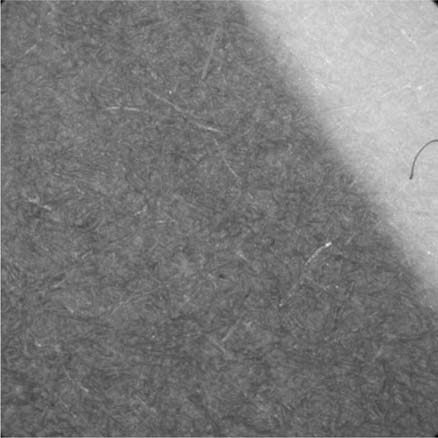
Figure 3: Photomicrograph of albumen paper
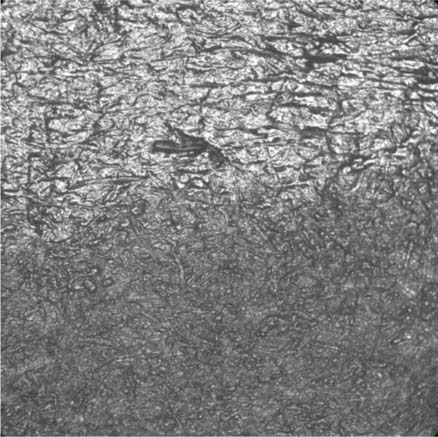
Figure 7: Photomicrograph of the difference in gloss along the edge of an albumen print
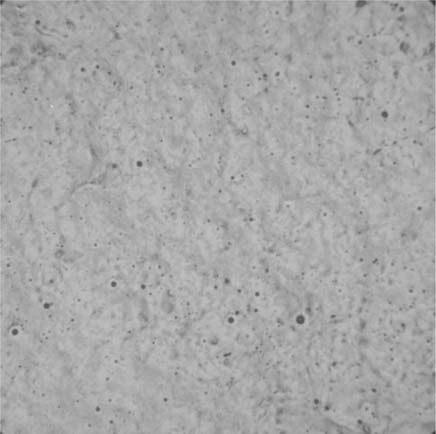
Figure 4: Photomicrograph of gelatin silver POP
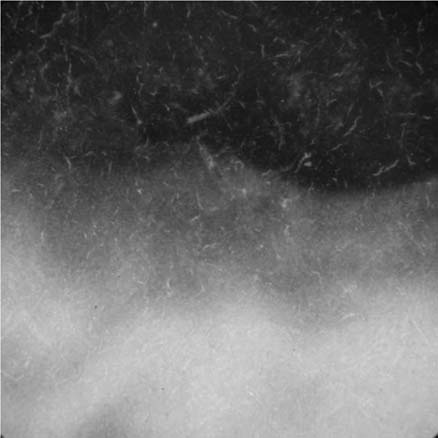
Figure 5: Photomicrograph of matte print with visible paper fibers
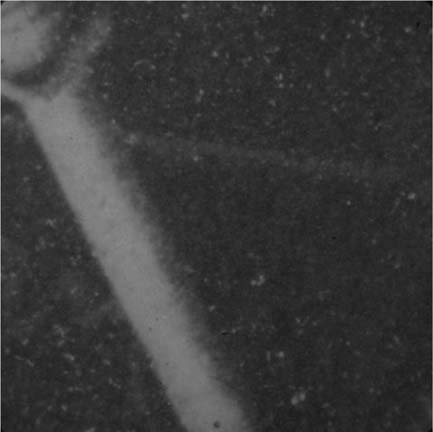
Figure 6: Photomicrograph of matte gelatin silver paper without visible paper fibers
A group of twelve photographs was chosen for further study (Table 1). The group included examples of the four types of photographic prints in good, fair, and poor conditions. This selection does not represent the ratio of paper types and conditions present in the MoMA Collection. In this study, the matte prints that had paper fibers visible under magnification were in the best condition, with the least amount of image deterioration overall and the least yellowing of highlights. The prints made on albumen paper exhibited a variety of conditions; from near pristine condition, to overall yellowing, and to extensive fading. Similarly some of the gelatin silver prints were in excellent condition, others were discolored overall, and many had local areas of discoloration and staining. The matte gelatin prints were generally in poor condition, discolored overall. However, one matte gelatin print was found in pristine condition.
Usually gold toning imparts added stability to the image material of a photograph, so it seemed plausible that the prints in good condition might have been gold toned, while the prints in poor condition had not. Other possible explanations for the poor condition of some prints are poor processing, exhausted toning or fixing baths, or inadequate washing. It was hoped that FTIR analysis could be used to help characterize the binder layer present on the unidentified matte papers, as well as determine the nature of the coating on the albumen print. XRF analysis would be used to determine which of the prints were gold toned.
A limited number of photographs were analyzed with a Fourier Transform Infrared microscope, since the instrumentation required removing small samples from the photographs. The two types of matte prints and the albumen print that appeared to have a coating were analyzed in order to characterize the unknown matte binder layers and to determine the presence of a coating on the albumen print. FTIR is a spectrometric technique especially well suited for identifying classes of organic materials. In FTIR, a sample is bombarded with infrared radiation over a range of frequencies. The different atomic bonds in a sample absorb the radiation at characteristic frequencies. The percentage of radiation absorbed at each frequency is measured and when compared with a reference library, the spectrum allows the identification of the sample material (Perron 1989).
A small sample was removed from the edge of the photograph being analyzed with a tungsten needle. The sample was taken as close to the edge of the photograph as possible, usually from an area that was already flaking. The sample site was not visible to the naked eye. The sample was then and placed on a diamond cell. A Thermo Nexus 670 FTIR spectrometer with a Continuum microscope fitted with a 15x objective detecting between 4000 and 650cm-1 was used to analyze the sample. Seventy-five spectra were collected from each sample. If the sample was particularly small or the signal was weak, it was scanned 150 times. Several areas of each sample were measured.
The spectra obtained from the two types of matte prints both showed the presence of protein. The distinction between albumen and gelatin can be difficult to make since the two proteins share a similar molecular structure, both showing strong amide I and II absorbtion bands in the same range of frequencies. In general, the absorption bands of albumen are at lower frequencies than gelatin and tend to shift upon aging (Perron 1989). The print supposed to be matte gelatin did show its best matches with gelatinous compouds such as aged gelatin, Knox gelatin, isinglass, and hide glue when compared with the reference library. The other matte prints yielded relatively poor matches for both protein and starch. The poor match for both these materials is likely due to the presence of both on the photograph. In the spectra for these samples, peaks at 1652, 1532 and 1537 wavenumbers appear to be the amide absorption bands characteristic of protein. The peaks at wavenumbers lower than this match well with various starches, including wheat starch, rice starch, and arrowroot. The presence of both starch and protein is consistant with a matte albumen photograph, which has a binder layer composed of both arrowroot and albumen.
The albumen print that appeared to have a coating was analyzed, but FTIR found only albumen in the sample. The photograph may not have been coated afterall, and the difference in surface gloss along the bottom edge of the print may be due to uneven coating of the albumen.
In order to determine the elemental composition of the image material, twelve prints were analyzed by XRF (Table 1). From the four groups of printing out papers identified earlier in the study, an example of a print in good, medium, and poor condition were chosen for analysis.
XRF is a spectrometric technique for multielemental analysis. In XRF analysis, the sample is bombarded with X-rays. When an x-ray photon collides with an electron in the innermost electron shells of an atom of the sample, the electron is dislodged from its orbit, leaving a vacant space. This vacancy in one of the inner shells creates instability and is immediately filled with an electron from an outer shell. This rearrangement in electrons is accompanied by a decrease in energy, since electrons in the outer shells have higher energies than those in the inner shells. An X-ray photon is emitted with energy approximately equivalent to this decrease. These energy changes are unique for atoms of a given element, so each element produces a unique spectrum of X-rays. These spectra can be used to identify the elements present in a sample. In the case of photographs, the characteristic spectra of the metals in the image material are used to aid in photographic process identification. Although XRF can easily identify high atomic weight elements, it is more difficult to identify light weight elements such as carbon or oxygen. X-rays emitted from elements lighter than sulfur have energies less than 2eV. Such low energy X-rays are typically absobed by the air before they are able to be detected by the XRF instrumentation.
XRF analysis was carried out with the Keymaster TRACeR III-V portable XRF spectrometer. Christopher McGlinchey outfitted the XRF spectrometer with a copper-aluminum filter, which was selected because it specifically reduced noise and peaks generated from the x-ray tube in areas where peaks from gold would appear on the spectra. This allowed for easier identification of the presence of gold toning in the sample photographs.
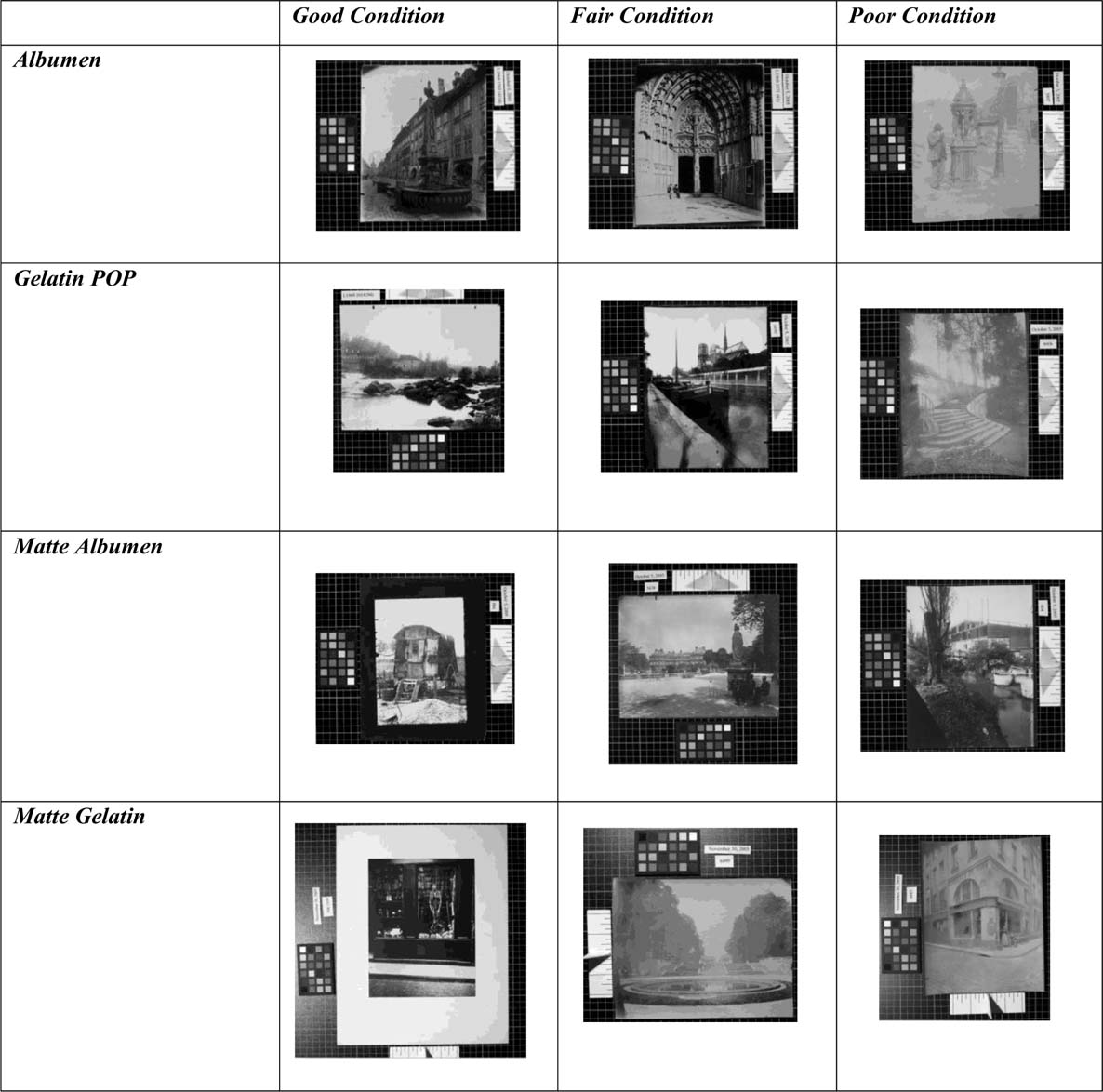
Table 1: Photographs Analyzed in the XRF Study - All images in this study are part of The Museum of Modern Art, Abbott-Levy Collection. Partial gift of Shirley C. Burden.
A custom matboard mount was created to safely hold the delicate photographs during analysis (figures 8 and 9). In order to prevent interference from the matboard, holes were cut in the mount behind the areas of the photographs that were going to be analyzed.
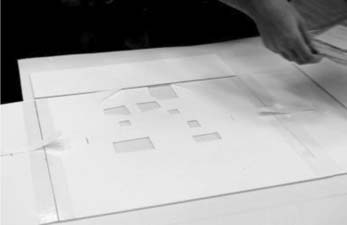
Figure 8: Matboard mount. Holes were cut in the mount to prevent interference from the matboard during analysis.
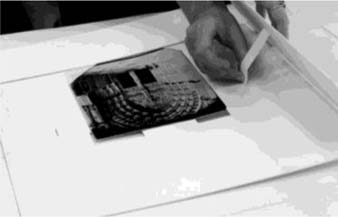
Figure 9: A photograph is secured in the mount with photo-corners and matboard flaps.
Once secured in the mount, the photograph was ready for analysis. The mounted photograph was placed on an easel and held in place with the aid of Ethafoam blocks. The XRF spectrometer was mounted onto a heavy-duty tripod, typically used for motion picture cameras (figure 9). This tripod has a central track which can be adjusted to move the spectrometer towards and away from the sample. In order to align the XRF spectrometer with a site for analysis, a flashlight was used to shine light through the appropriate opening in the back of the mount. This illuminated the spot on the recto of the photograph, and allowed the XRF spectrometer to be aligned properly (figure10). The spectrometer was advanced to approximately 5mm away from the surface of the photograph for data collection.
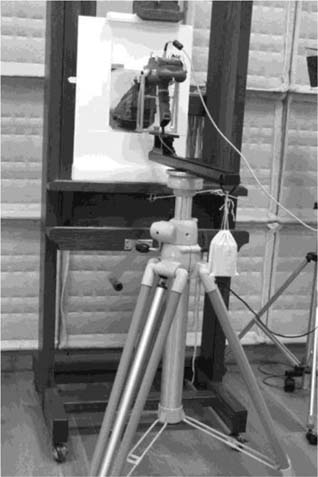
Figure 10: XRF Set Up
A minimum of four sites were selected for analysis on each photograph. Three maximum density areas (where the image appears darkest and there is the highest concentration of image material), one minimum density area (where the image is the lightest and there is the least image material), and other points of interst, such as localized areas of dicoloration, were analyzed. Three d-max areas were analyzed in each sample since these areas would provide the clearest data about the composition of the image material, due to the higher concentration of image material in these areas. Data was collected at 40kV and 7μA for 180 seconds. Acrylic sheeting was also analyzed to be used as a background spectrum.
Peaks were identified and the area under them measured using the XRF spectrometer's software package. This data was exported into a Microsoft Excel spreadsheet. Peaks in each spectrum were normalized with respect to the rhenium l-a peak, which is a consistant artifact of the x-ray tube. While the exact amount of an element present could not be quantified, this method did allow for the comparison of the relative abundance of specific elements between samples. The results of the normalized acrylic sheeting spectrum were subtracted from the other data sets, and the results were summarized in a series of bar graphs.
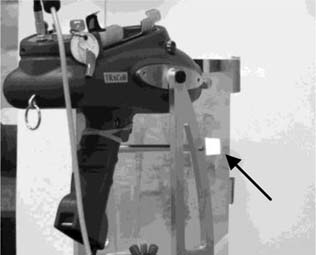
Figure 11: The spectrometer is aligned with the sample site by shining a flashlight through one of the holes cut in the back of the mount.
Elements identified through XRF analysis included silver, barium, sulfur, selenium, gold, calcium, iron, and lead.
Silver was identified in all of the samples. As expected, silver is present as the primary image material in all of Atget's photographs.
Signigicant amounts of barium were found in the gelatin and matte gelatin prints, confirming the presence of a baryta layer, composed of barium sulfate in gelatin, in these photographic papers (Chart I). Sulfur was also found in elevated levels in these two types of prints. It was hoped that differences in the relative abundace of sulfur could be correlated with differences in condition, but the high concentration of sulfur in the baryta layer makes the small differences in sulfur concentration associated with image deterioration difficult to discern. Sulfur did appear to be present in comparitively slightly higher amounts in the albumen print in poor condition and the matte albumen prints in medium and poor condition, but a more sensitive method of XRF analysis, perhaps employing the use of a vacuum and a helium flush, would be needed to obtain more precise data for light elements like sulfur that emit x-rays that are absorbed by air.
Selenium, commonly used as a toner, was found in only one photograph, the example of a matte gelatin print in good condition (Chart II). The first patent for selenium toning was obtained by Rheinischen Emulsions - Papier Fabrik A. G. of Dresden in 1910. The active toning agents in selenium toners are thought to be sodium selnosulfide (NaSeS) and sodium selenosulfate (NaSeSO3), which convert the silver image to silver selenide, a more stable image particle. This explains the excellent condition of this print in comparison to the other matte gelatin prints. However, as this is the only print toned with selenium, it seems likely that it was not made by Atget himself. Instead, the print may be a developed out print made by Berenice Abbott after Atget's death. Selenium toning alters the neutral black color of a developed out gelatin silver print to a warm color (Lee 1987), allowing for confusion with printed out images.
Gold was identified in all of the prints (Chart III). Atget would have used gold to tone his prints, as was standard pratice in the nineteenth century, when he took up photography (Reilly 1987). Broad correlations of the relative abundance of gold can be made with the condition of a photograph. The matte albumen prints, which were in the best overall condition in this study, have the greatest relative abundance of gold, while the matte gelatin prints, which have the least relative abundance of gold tend to be in the worst condition. It is important to note, however, that the amount of gold detected on these prints is so small that it may be considered within the bounds of experimental error.
Calcium was found in all of the photographs, likely as a component of the paper support or as an element present in the albumen and gelatin binder layers. Made from eggs, which have calcium rich shells, albumen may contain some calcium. Similarly, gelatin made from boiled bones and cartilage, may also contain calcium. Iron was also found in all of the photographs, but in significantly higher abundance in the albumen and matte albumen photographs. Iron could be somehow associated with the albumen binder layer, or may be present as impurities in the paper or from the manufacturing equipment. The baryta layer in the matte gelatin and gelatin prints may act as a barrier to the analysis of elements, such as iron, that may be present in the paper support. Lead was also found in all of the photographs except the matte albumen prints. While silver is often obtained from lead ores, there is currently no explanation for the presence of lead in all but the matte albumen prints.
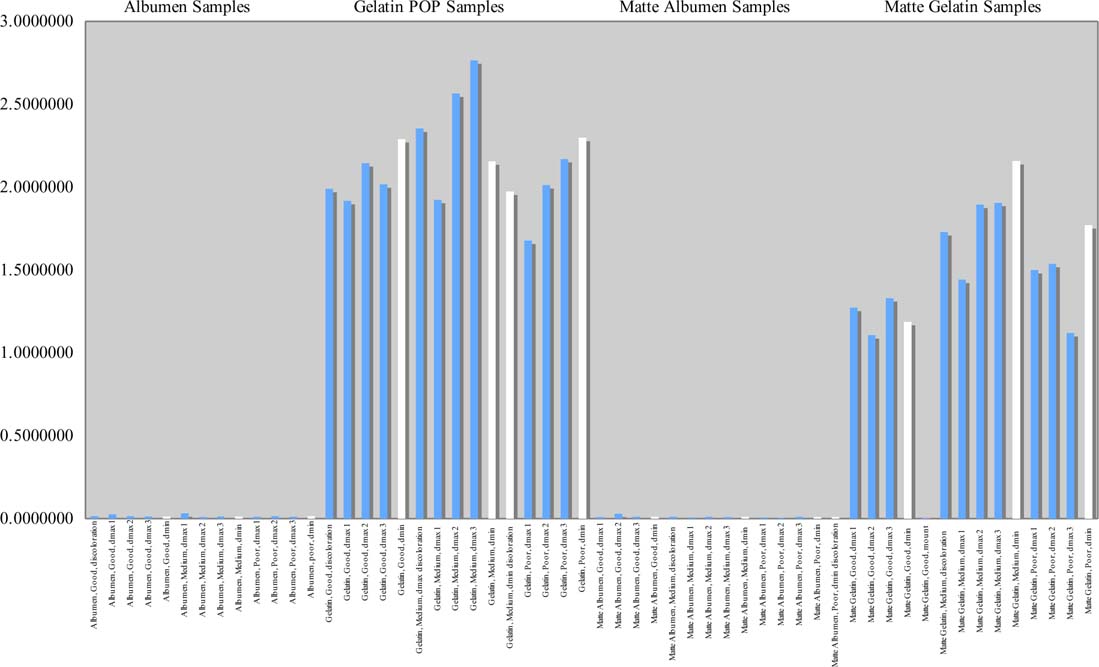
Chart I: Relative Abundance of Barium
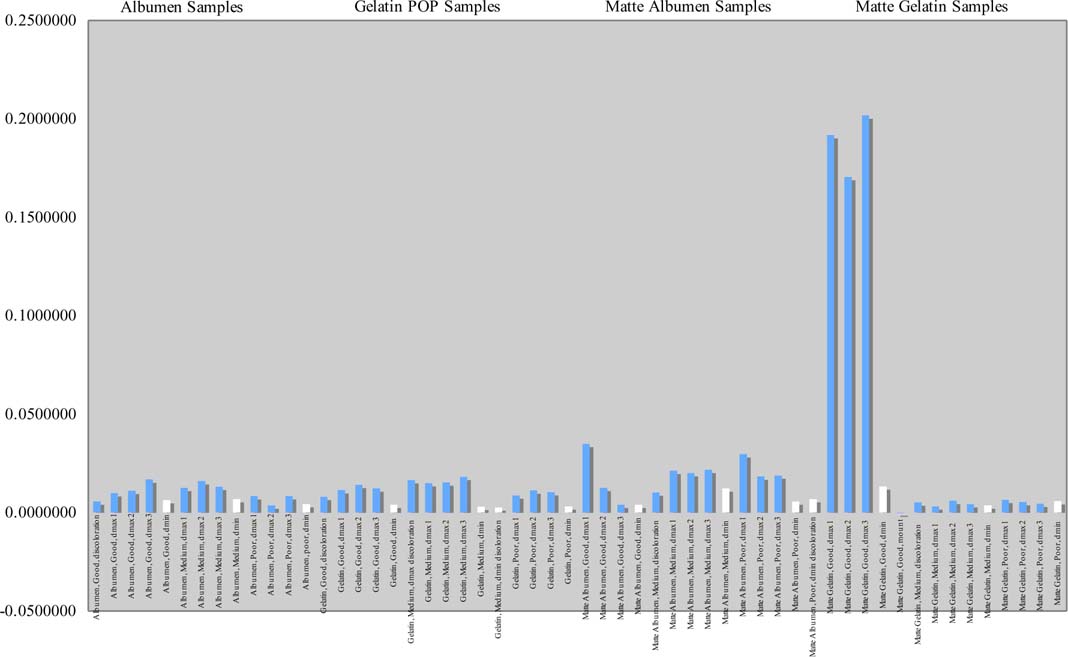
Chart II: Relative Abundance of Selenium
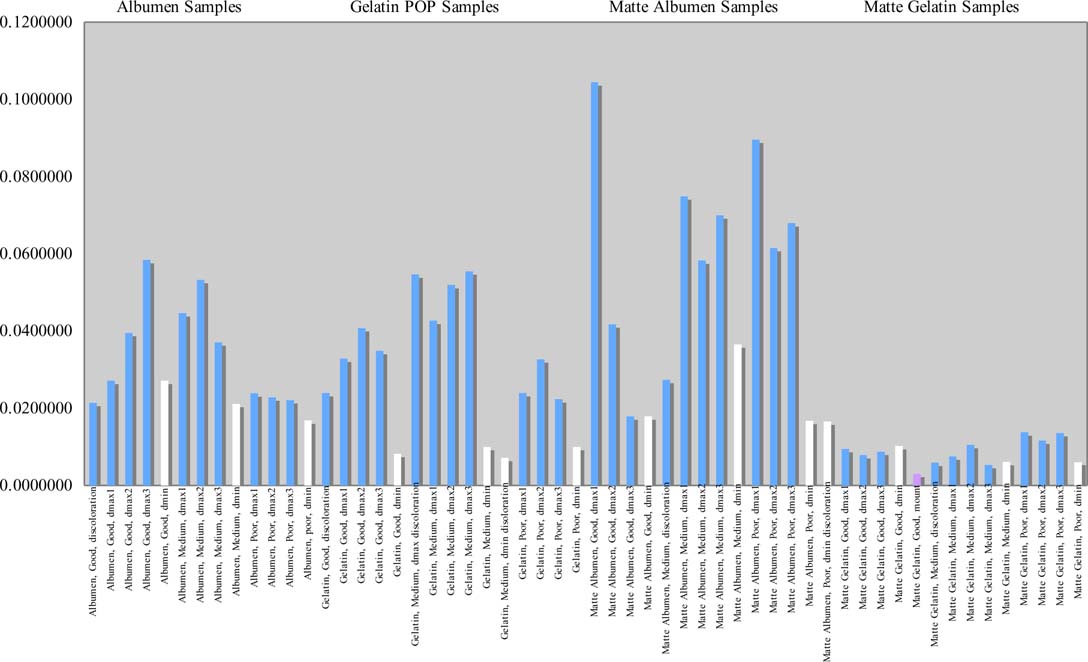
Chart III: Relative Abundance of Gold
This study has explored some of the questions about Atget's photographic technique and how it relates to the condition of his photographs. It was established that Atget used at least four types of printing-out paper including albumen and gelatin papers, which were easily identified by visual analysis alone, and two matte papers. All of these papers have silver based image material, confirmed by XRF analysis. It is possible that the early collodion paper mentioned by Hambourg does exist in the MoMA collection, but it may not have been spotted in this study due to its rarity. If found, examples of this paper should also be analyzed to determine its composition.
The rarer of the two matte papers appears to be a matte gelatin printing out paper. The presence of elevated levels of barium and sulfur in XRF analysis confirm the presence of a baryta layer, typical of a gelatin paper. FTIR analysis confirmed that the binder was indeed gelatin based. The matte gelatin print that was in the best condition appears to actually be a selenium toned developed out print, likely made by Berenice Abbott. These results agree with analysis done at the Philadelphia Museum of Art. These analyses also noted that prints by Abbott were often selenium toned.
The other matte papers are consistant with matte albumen papers as described by Reilly in The Albumen and Salted Paper Book. Under magnification, the image material appears to be nestled in the paper fibers, much like in a salted paper print. FTIR analysis showed that both protein and starch were present as a binder layer, as would be expected in a matte albumen print, which has a mixture of albumen and arrowroot as a thin binder. FTIR could not identify the exact nature of the protein and starch. Further analysis, such as gas chromatograph mass
spectroscopy (GCMS) could be employed to exactly identify the starch and protein components of the binder. These results are consistent with microchemical testing carried out by Cartier Bresson and FTIR and GCMS analysis preformed at the Philadelphia Museum of Art.
No coatings were found on the Atget photographs analyzed in this study, although Cartier Bresson noted that some of Atget's albumen prints were coated with varnish or wax. Cartier Bresson did not analyze the coatings in her study. Further research and analysis is required to determine what coatings, if any, Atget used on his photographs.
The difference in conditon among the prints did appear to have some correlation to the amount of gold present in the image and may be related to the ways the different photographic papers absorb photographic chemicals. The prints in the best condition were made on the matte albumen papers. These prints had the highest relative abundance of gold. The matte surface and thin binder layer of these prints may have facilitated toning. As the silver image material is more exposed in this type of print, toning reactions occurr more rapidly, resulting in more gold being deposited and greater protection from image deterioration than would occurr with a plain albumen or gelatin print. The prints in the worst condition, the matte gelatin prints, had the lowest levels of gold, and perhaps, were not gold toned at all. These prints were the rarest of Atget's work and are not noted in Cartier Bresson's study. The matte gelatin and gelatin prints may also experience additional condition problems since they require longer washing due to their baryta layers. The baryta layer absorbs the photographic processing chemicals, resulting in the need for a longer wash time than albumen prints. Insufficient washing could result in a greater incidence of image deterioration.
However there are still inexplicable differences in condition. For example, for what appears to be a small difference in relative abundance of gold, there is a large difference in condition between the albumen print in good condition and poor condition. In order to better understand these differences it would be necessary to better characterize the impact that residual sulfur from improper washing has had on the prints. XRF preformed with vacuum and helium flush may aid in this analysis. In addition, further analysis would be beneficial to obtain more statistically significant results.
Hailed as both the last photographer of the nineteenth century and the first modern photographer of the twentieth century, Eugène Atget's photographs occupy a unique space in the history of photography. As interest in Atget and his work has increased over the past 25 years, so has the demand for more in depth information about his life, career, and photographic technique. While many of the details of Atget's life have been lost with the passage of time, careful review his surviving business records and the scientific analysis of his photographs can help increase our understanding of Atget's working methods, photographic materials, and his prolific career.
The author wishes to thank Lee Ann Daffner, Chris McGlinchey, Erin Murphy, Lisa Barro, and Margaret Holben Ellis for their ideas, support, and contributions.
Adams, A. Nov. 6, 1931. The Fortnightly (San Francisco) 1(5). 25.
Atget, E. Letter to Paul Léon, Ministre des Beaux-Arts, November 12, 1920.
Beaumont-Maillet, L.. 1993. Atget's Paris. London: Thames and Hudson.
Abbott, B. 1964. The World of Atget. Horizon Press.
Borcoman, J. 1984. Eugène Atget 1857–1927. Ottawa: National Gallery of Canada.
Cartier Bresson, A. 1987. Techniques d'Analyse Appliquées aux Photographies d'Eugène Atget Conservées dans les Collections de la Ville de Paris. ICOM committee for conservation: 8th triennial meeting, Sydney, Australia, 6–11 September, 1987. The Getty Conservation Institute. 653–658.
Cooper, T. and P. Hill. 1979. Dialogue with Photography. New York: Farrar, Strauss and Giroux. Haist, G. “Chemical Treatment of the Silver Image.” Chapter 3. Modern Photographic Processing. Volume 2.
Hambourg, M. M. 1980. Eugène Atget 1857–1927: The Structure of the Work. PhD Thesis, Columbia University. 66–74.
Harris, D. 1999. Eugène Atget: Unknown Paris. New York: The New Press.
Hill, P. and T. Cooper. 1975. Interview: Man Ray. Camera 74. 39–40.
Jacobson, K. 1991. Problematic Low-Sheen Salt and Albumen Prints: A Proposed Nomenclature. History of Photography. 15 (4). 287–293.
Khanjian, H. P. Stulik D.C. 2002. Infrared spectroscopic studies of photographic materials.” Conservation Science 2002, Papers from the Conference held in Edinburgh, Scotland 22–24 May 2002. Archetype Publications. 195–200.
Lee, W. E. 1987. Toning: Its Invention and Expanding Role in Photography. Chapter 8. Pioneers of Photography: Their Achievements in Science and Technology. Springfield, VA: The Society for Imaging Science and Technology.
Lemagny, J.C. 2000. Atget, the Pioneer. Munich: Prestel. Naef, W., ed. 2000. In Focus: Eugène Atget, Photographs from the Getty. Los Angeles: The J. Paul Getty Museum.
McCabe, C. and L.D. Glinsman. 1995. Understanding Alfred Stieglitz' platinum and Palladium prints: examination by x-ray fluorescence spectrometry. Research techniques in photographic conservation: proceedings of the conference in Copenhagen, 14–19 May 1995. Kobenhavn, Denmark: Royal Danish Academy of Fine Arts. School of Conservation. 31–40.
Nesbit, M. 1992. Atget's Seven Albums. New Haven: Yale University Press.
Perron, J. 1989. The Use of FTIR in the Study of Photographic Materials. Topics in Photographic Preservation 3.
Price, B. A.K. Sutherland. 2005. Looking at Atget's and Abbott's Prints: The Photographic Materials.” In Barberie, Peter. Looking at Atget. New Haven and London: Yale University Press. 103–120.
Reilly, J.M. 1980. The Albumen and Salted Paper Book: the History and Practice of Photographic Printing 1840–1895. Rochester Light Impressions NY.
Reilly, J.M. 1978. The Manufacture and Use of Albumen Paper. The Journal of Photographic Science 26. 156–161.
Reilly, J.M. 1987. The Care and Identification of 19th Century Photographic Prints. Rochester: Eastman Kodak Company.
Reilly, J. M., D. Severson and C. McCabe. 1982. Image Deterioration in Albumen Photographic Prints. Science and technology in the service of conservation. Preprints of the contributions to the Washington congress, 3–9 September 1982. International Institute for Conservation. 61–65.
Reilly, J. M., N. Kennedy, D. Black and T. Van Dam. 1984. Image Structure and Deterioration in Albumen Prints.” Photographic Science and Engineering. 28(4).
Sastre, J. 2002. Atget: Paris in Detail. London: Thames and Hudson. Sixou, Christian 2003. Une Histoire de Plaques: L'industrie de la Plaque Photographique de 1850 á 1970. 79.
Stulik, D., H. Khanjian, A. de Tagle, Alberto, and A.M. Botelho. 2002. Investigation of Jean-Louis-Marie-Eugene Durieu's toning and varnishing experiments: a non-destructive approach. ICOM Committee for Conservation, ICOM-CC : 13th Triennial Meeting, Rio de Janeiro, 22–27 September 2002 : preprints. ICOM-CC. 658–663.
Szarkowski, J.. 2000. Atget. New York: Museum of Modern Art.
Szarkowski, J. and M.M. Hambourg. 1981. The Work of Atget. New York: Museum of Modern Art, Volumes 1–4.
Worswick, C.. 2002. Berenice Abbott and Eugène Atget. Santa Fe, NM: Arena Editions.
Camille Moore
Research on Eugène Atget's photographs at The Museum of Modern Art was conducted as part of an independent study course while Camille was a third-year graduate student at the Conservation Center at NYU's Institute of Fine Arts in the Fall of 2005.
Papers presented in Topics in Photographic Preservation Volume Twelve have not undergone a formal process of peer review.